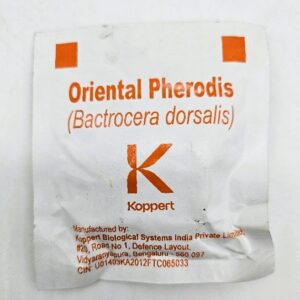No products in the cart.
Other, Protection, Tools
Horiver Sticky Trap – Blue
Use Horiver Sticky Traps for trapping and monitoring of different flying insects like the adult aphids, leaf-miners, whiteflies, thrips and sciarids.
₹430.00 ₹550.00
Sticky traps are an essential tool in detecting and partially eliminating flying pests in greenhouses. They offer several benefits, including early pest detection and the ability to use biological measures for control, reducing the need for chemical applications. Regularly counting the captured insects on the sticky traps provides valuable information about the presence of pests, the rate of population growth, and when the population is likely to peak. This helps growers better prepare for potential threats.
It is important to place the traps in areas where the risk of pest infestation is high, such as doors, gable ends, and lateral ventilation openings. To make counting easier, Horiver sticky traps have a grid design.
The recommended dosage for monitoring purposes is five traps per 1,000 m². If the traps are used for mass trapping in hot spots, the advised rate is at least one trap per 20 m² or at most one trap per 2 m².
Sticky traps are effective in capturing a wide range of flying pests, including aphids, leaf miners, whiteflies, thrips, fungus gnats, and more. They are a non-toxic method of reducing pest numbers and can save growers money by providing early pest detection.
Overall, sticky traps are a valuable tool for pest monitoring and control in greenhouses, offering growers important insights into pest populations and helping them take proactive measures to protect their crops.
| Weight | 0.2 kg |
|---|---|
| Dimensions | 2 × 5 × 20 cm |
Here are the instructions for using sticky traps in different crop scenarios:
For tall crops like cucumber, tomato, and pepper:
– Position the traps just above the top of the plant and adjust as the plants grow.
For crops with a low canopy:
– Support the traps with canes or wire holders and install them a maximum of 30 cm above the crop.







There are no reviews yet.